Russia has significantly increased trade with Iran. This can be seen on satellite images
Over the year, from July 2022 to June 2023, Russia significantly increased ship traffic in the Caspian Sea. There were significantly more ships near Russian and Iranian ports.
Translated by Dmitry Lytov. Читати українською.
In the illustration below, you can see a cluster of ships near the Volga-Caspian Canal in the direction of Astrakhan, which was recorded by satellite images for similar periods during the last two years.
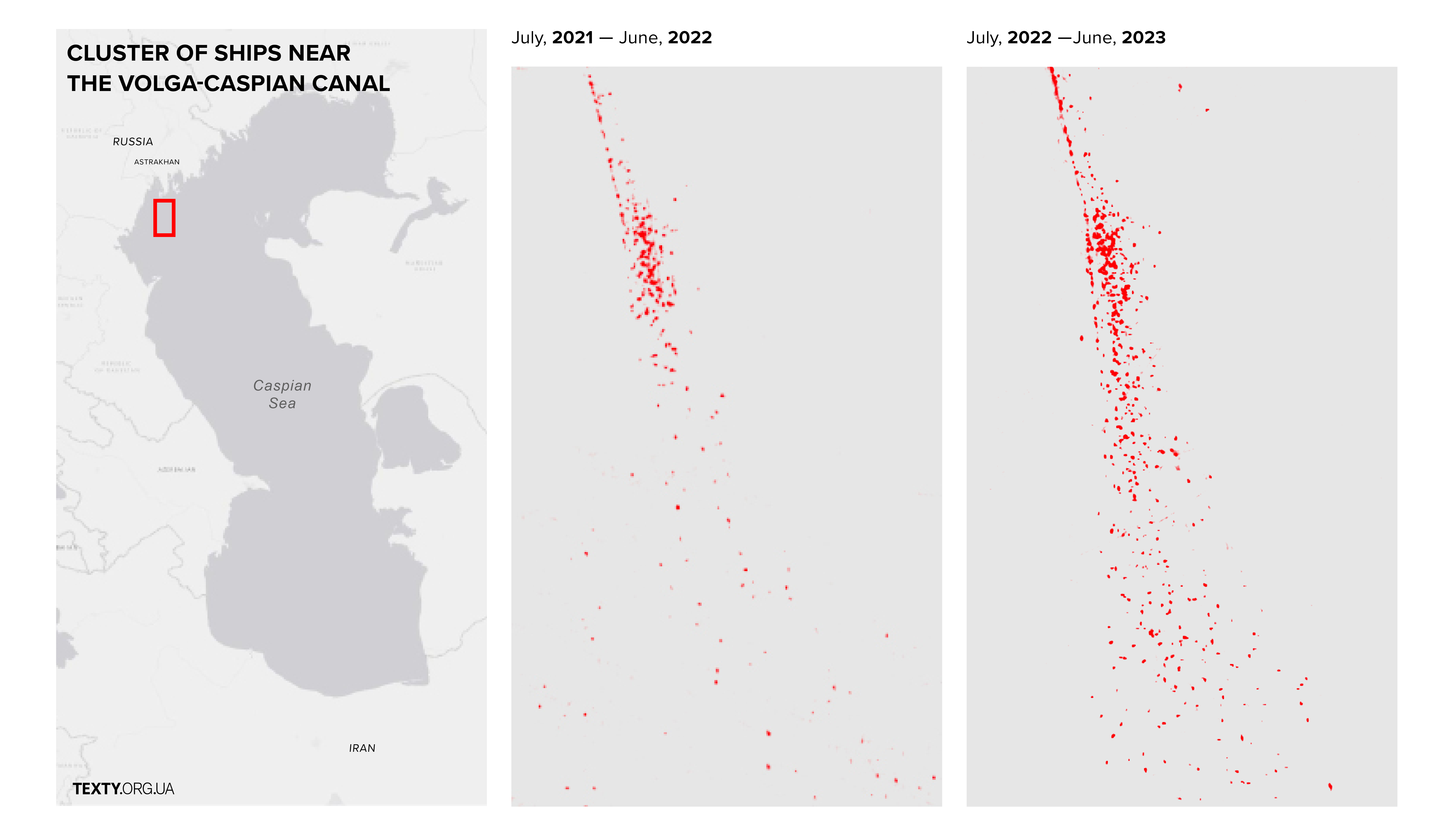
Cluster of ships near the Volga-Caspian Canal
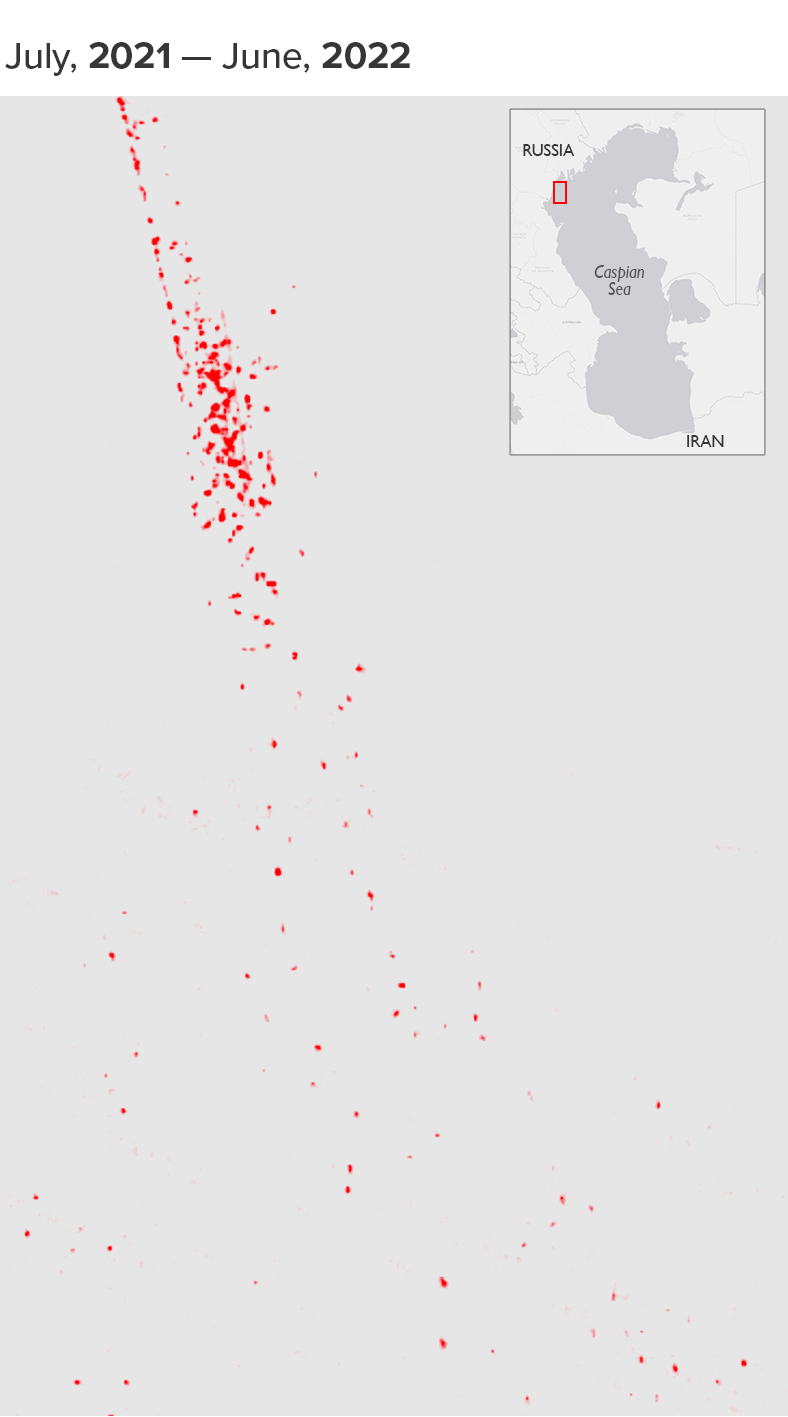
Below is an illustration showing how the congestion of ships near the two largest Iranian ports has increased.
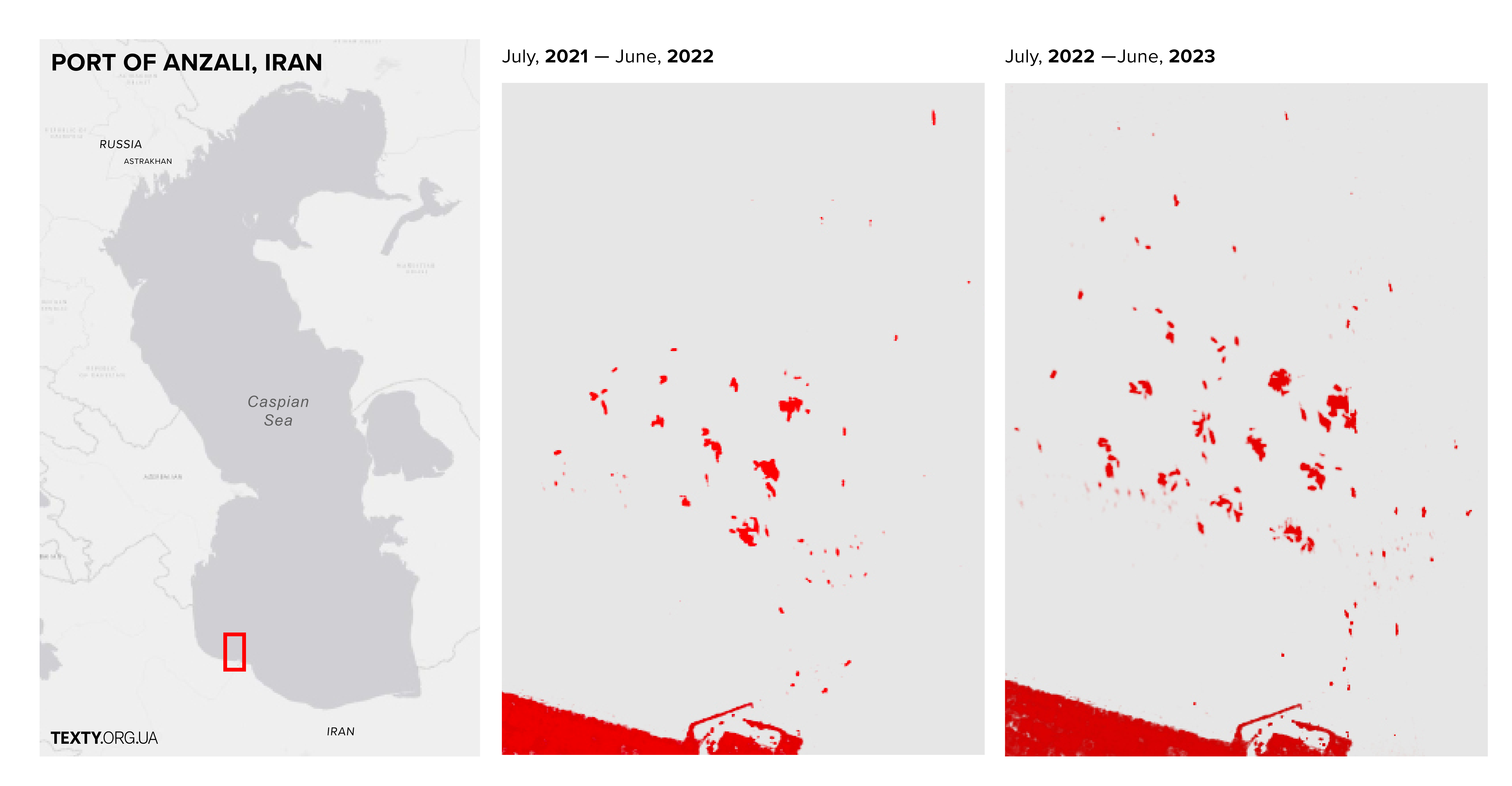
Port of Anzali, Iran.
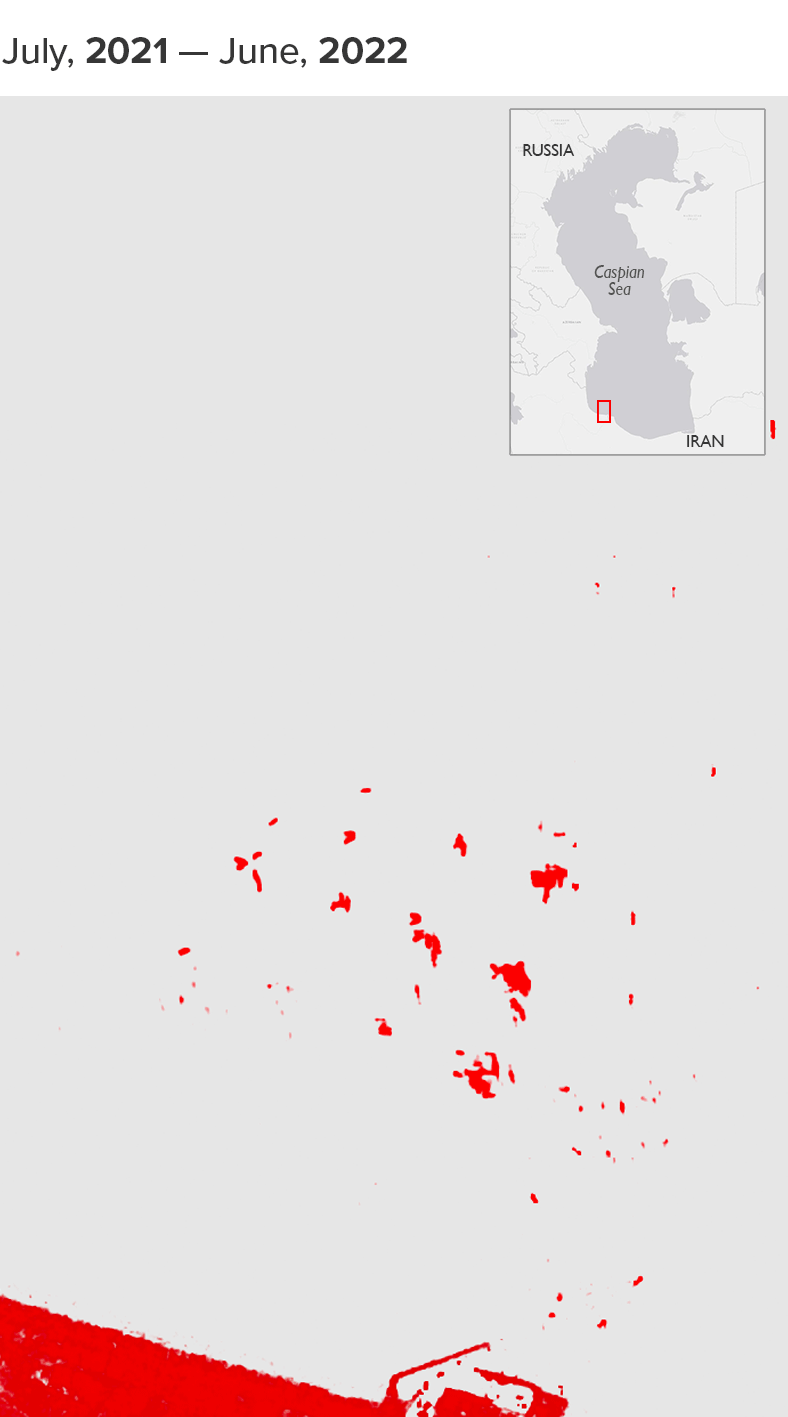
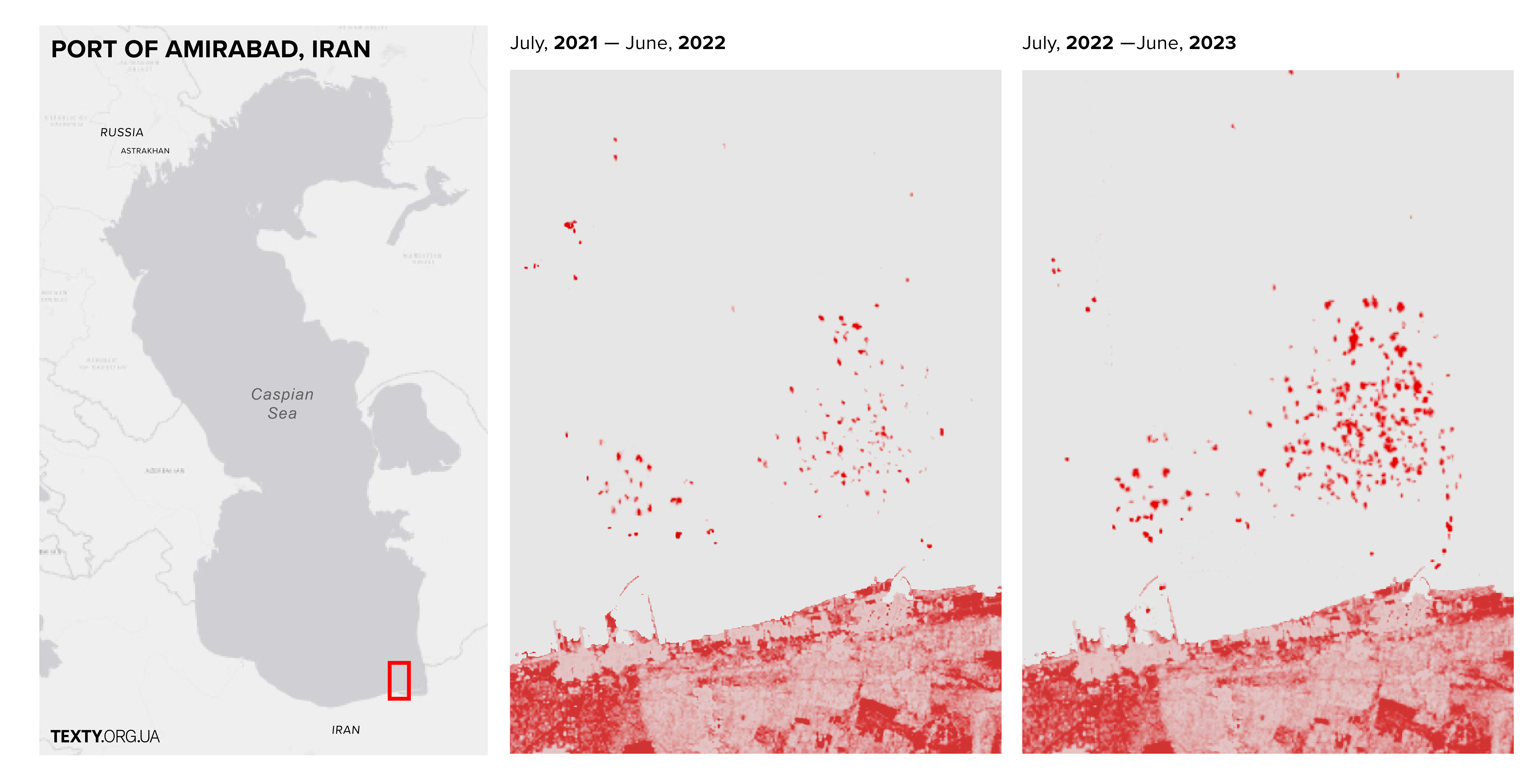
Port of Amirabad, Iran
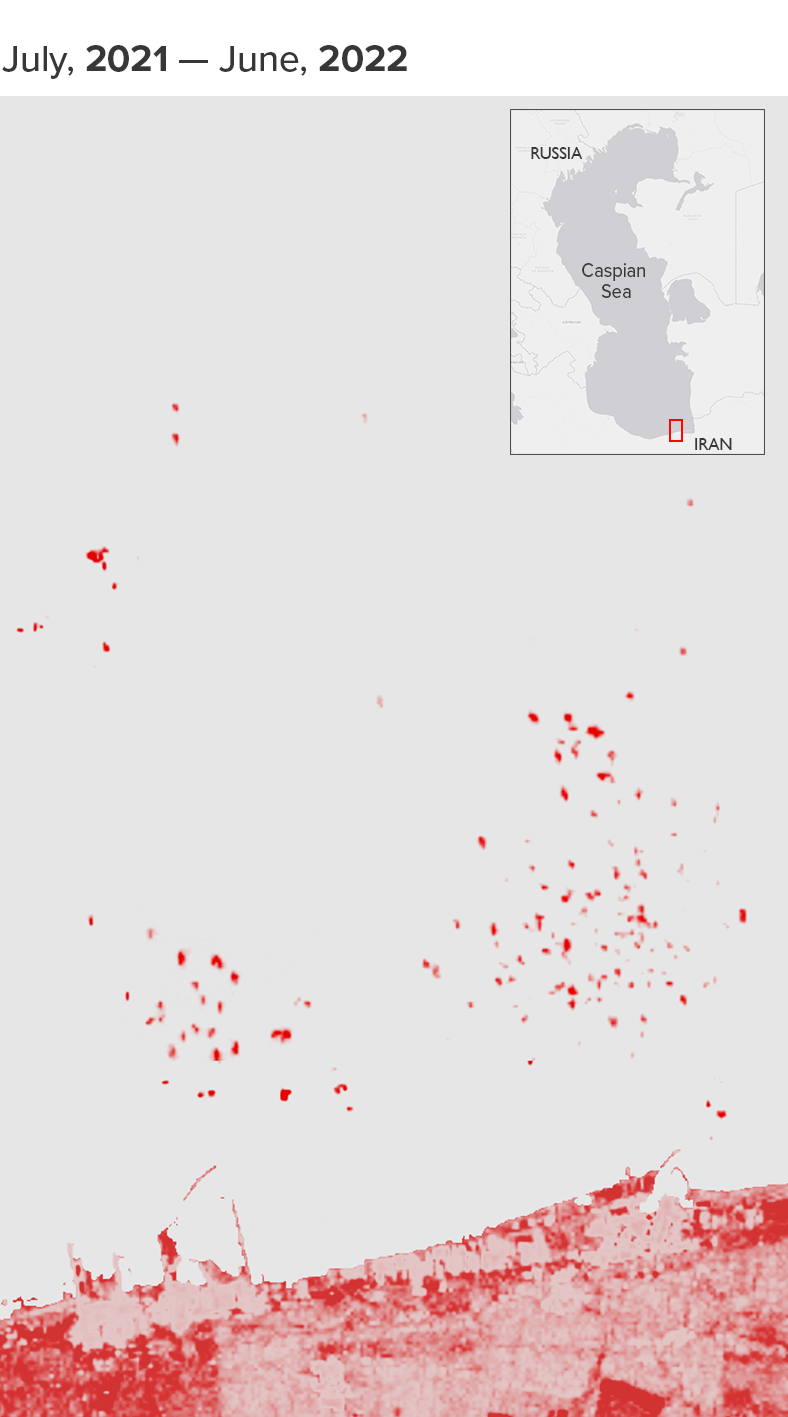
And while the difference in the number of ships near the Iranian coast does not appear to be as significant as near Astrakhan, the reason may lie in the way the Sentinel-1 satellite collects data. It is a radar satellite that makes a full turn around the Earth approximately once every six days.
Different surfaces reflect the satellite waves in different ways — that's why it captures iron accumulations outside of urban areas and "sees" metal in forests, fields and, in our case, on water. Previously, we used this technology to track Russian equipment on the border with Ukraine. Since the entrance to the Volga-Caspian Canal is narrow, this results in a greater concentration of ships near the entrance, making it easier for the satellite to capture them.
Similar changes are not visible near the shores of other Caspian countries. In the ports of Azerbaijan and Turkmenistan, shipping did not increase. A slight increase can be recorded only near the Kazakh port of Aktau.
Since last October, Russia has been shelling Ukrainian territories with Iranian drones almost every day. Around this same time, in September-October 2022, satellites began to record a noticeable increase in the number of ships near the Volga-Caspian Canal. Since then, their number has remained consistently high, except for March 2023.
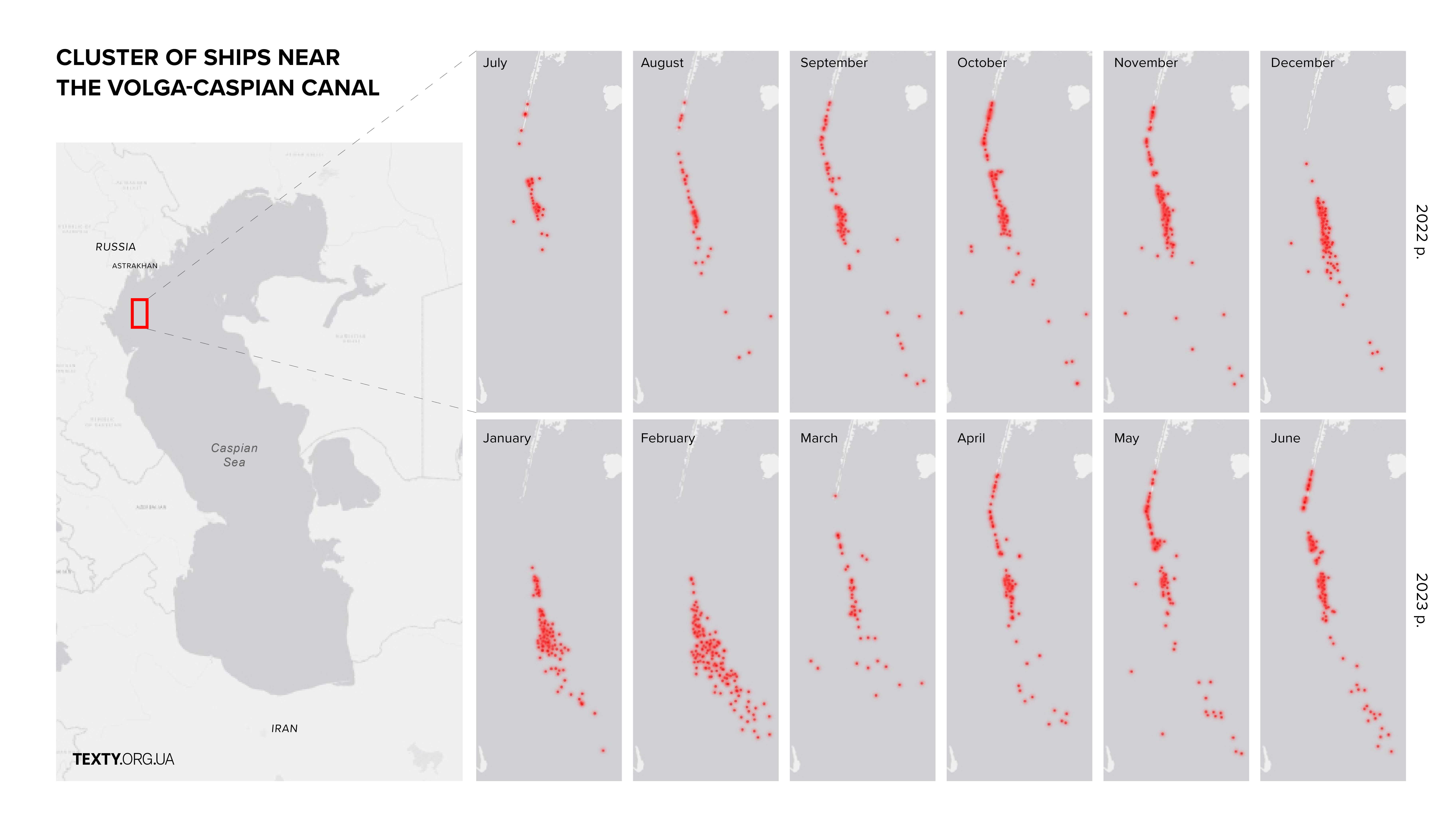
Cluster of ships near the Volga-Caspian Canal
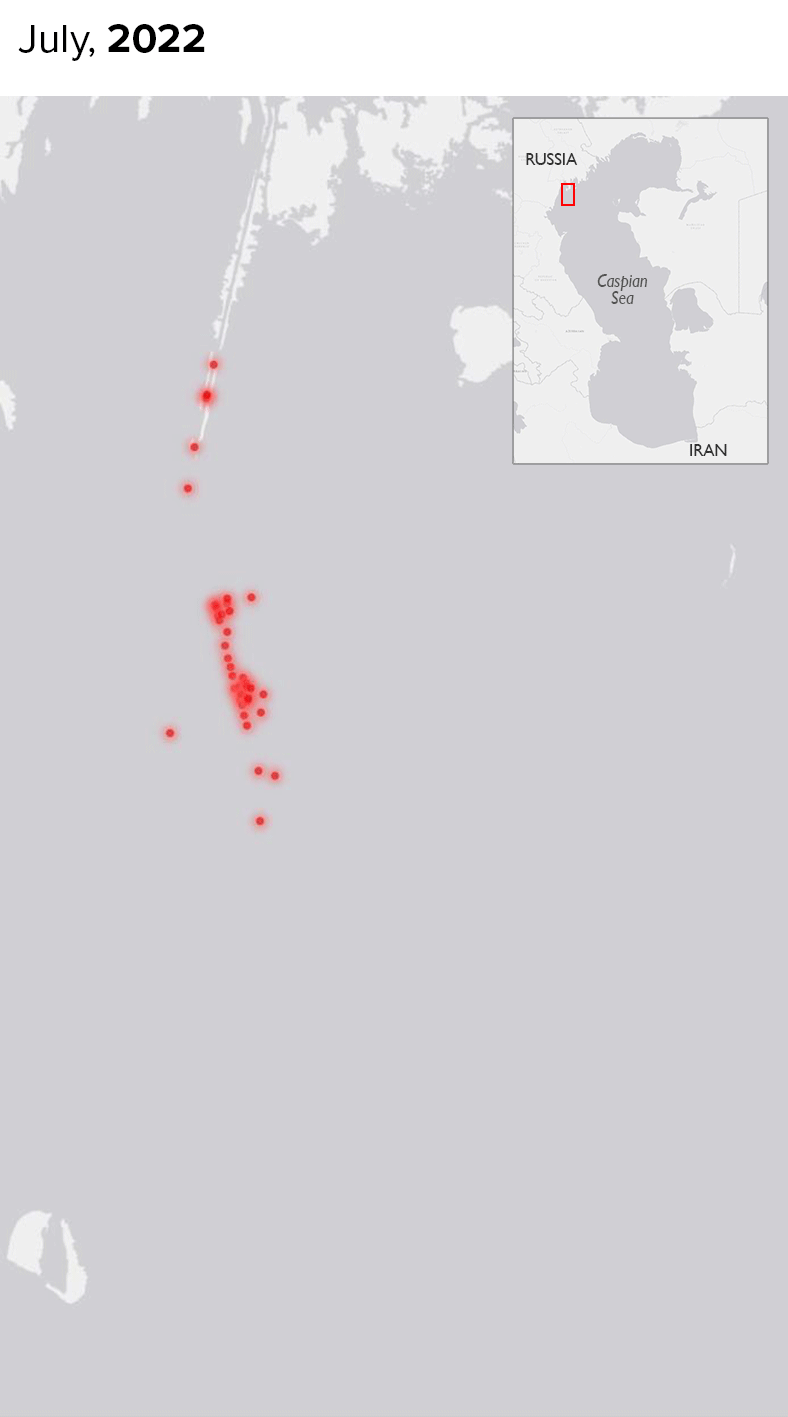
The transportation of drones alone, of course, could not have affected the traffic so much, but Russia does not only import drones from Iran.
In April, the WSJ reported that over the past six months [prior to publication], cargo ships had transported more than 300,000 artillery shells and 1 million rounds of ammunition from Iran to Russia. According to the publication, at the beginning of March, 1,000 containers with weapons, including 2,000 artillery shells, were transported on board a Russian cargo ship.
Sky News, citing its sources, wrote that Russia transports ammunition of 5.56 mm, 7.62 mm, 9 mm, 12.7 mm and 14.5 mm caliber, 40 mm grenades for grenade launchers, 107 mm anti-tank missiles and mortar shells of various calibers - 60 mm, 81 mm and 120 mm, rockets (130 mm, 122 mm and 152 mm) and armor-piercing tank shells 115 mm and 125 mm, as well as helmets and body armor. The Russian ships RASUL GAMZATOV (MMSI: 273157300), MUSA JALIL (MMSI: 273353660), BEGEY (MMSI: 273421560) appear in these two investigations.
Transport by sea is convenient and cheap
Russia and Iran share access to the Caspian Sea, and the Volga and Don rivers connect the Caspian and Black seas through a canal. Therefore, although many Ukrainians perceive Iran as a remote country, the logistics of delivering weapons and other goods from Iran to Russia and vice versa is as convenient as possible.
Take for example the ship Pola Mirophia (MMSI: 273215580). The route it took in June 2023 perfectly illustrates the convenience of logistics.
port
hidden location
During April-May 2023, the ship was near Ukraine and, according to data from the Shipintel service, carried out transportation between the ports of Berdiansk and Mariupol in the occupied territories and Russian ports in the Black Sea.
On June 14, the ship left Berdiansk and headed towards the Russian port of Azov, and on June 26 it arrived at the Iranian port. At first glance, it may seem that it is not very fast, but ships are able to transport a large amount of cargo, which is difficult to provide with other types of transport.
As Andriy Klymenko, Head of the Freedom of Navigation Monitoring Group of the Institute of Black Sea Strategic Studies, explains, Russia actively uses maritime logistics because it is the cheapest. And the journey by sea in the absence of storms takes only a few days. Russia is probably carrying something stolen from the occupied territories — it could be factory equipment, scrap metal, grain, or something else — we can only speculate.
However, despite the convenient logistics between Iran and the occupied part of Ukraine, Russian ships still often move between Iranian ports and Russian ports in the Caspian Sea (Astrakhan, Olya, Krasnye Barrikady).
One of the reasons may be Ukrainian missiles, which periodically “fry” ammunition depots in the occupied part of Ukraine, so Russia probably avoids keeping large stockpiles of weapons near the frontline. Weapons can also be reloaded on other ships in Russian ports in the Caspian Sea to make tracking difficult.
CNN previously reported that at the end of 2022 and the beginning of 2023, the number of gaps in tracking data on Russian and Iranian cargo ships in the Caspian Sea increased almost fourfold.
On the map below you can see an example of the suspicious behavior of the Russian ship OMSKIY 111. It left the Russian port of Makhachkala and, according to the declared route, was supposed to go to the Russian port of Olya, but on the way, it made a big loop towards Iran and may even have entered an Iranian port without reporting there.
declared route
hidden location
With Russia increasingly isolated, its cooperation and trade with Iran is likely to deepen in the near future. Moscow and Tehran have already signed an agreement on the construction of a large transport network, including a railway connection. The planned railway will connect Rasht, a city in northern Iran, and the Astara crossing point on the border with Azerbaijan. Russia is also building factories for the production of kamikaze drones on its territory.

